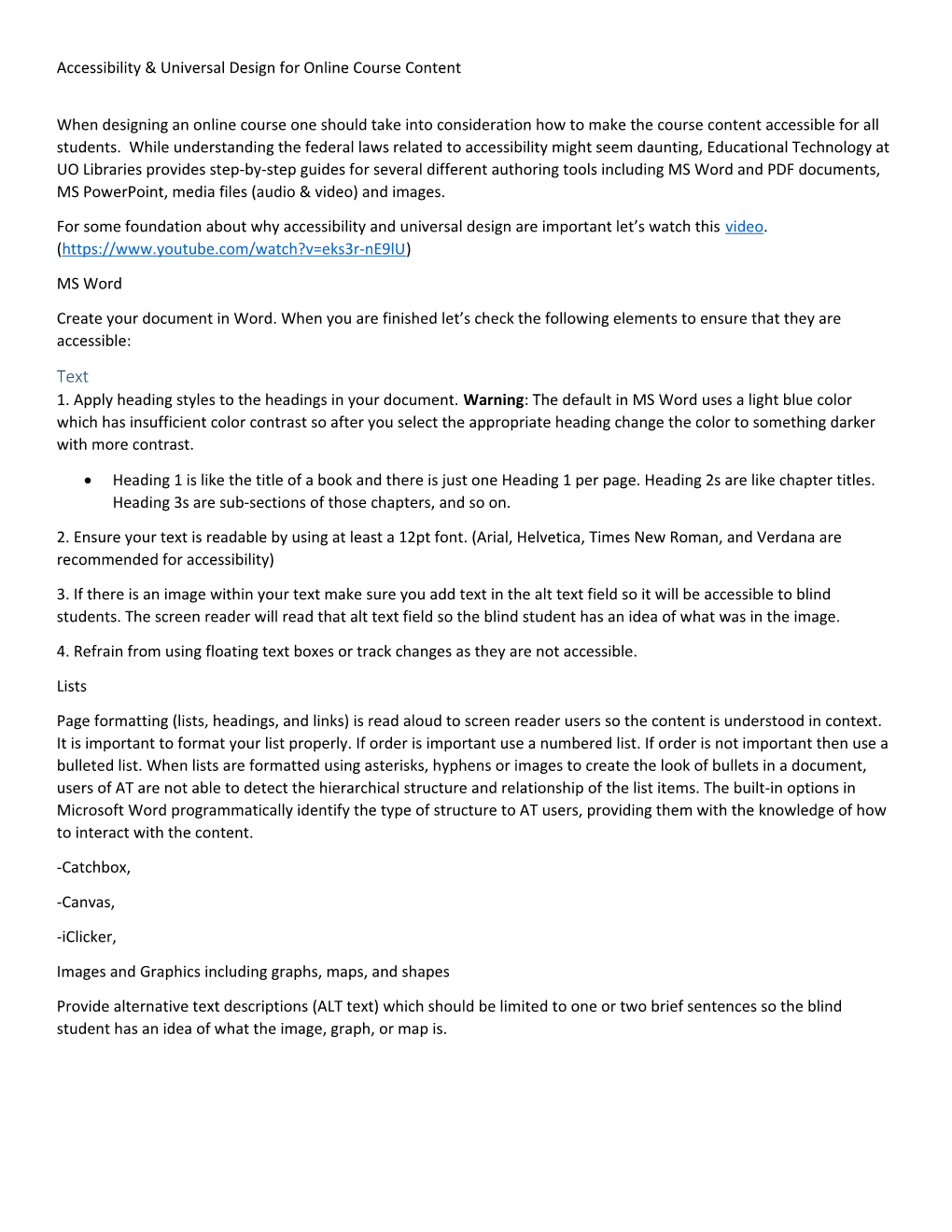Accessibility & Universal Design for Online Course Content
When designing an online course one should take into consideration how to make the course content accessible for all students. While understanding the federal laws related to accessibility might seem daunting, Educational Technology at UO Libraries provides step-by-step guides for several different authoring tools including MS Word and PDF documents, MS PowerPoint, media files (audio & video) and images.
For some foundation about why accessibility and universal design are important let’s watch this video. (
MS Word
Create your document in Word. When you are finished let’s check the following elements to ensure that they are accessible:
Text
1. Apply heading styles to the headings in your document. Warning: The default in MS Word uses a light blue color which has insufficient color contrast so after you select the appropriate heading change the color to something darker with more contrast.
- Heading 1 is like the title of a book and there is just one Heading 1 per page. Heading 2s are like chapter titles. Heading 3s are sub-sections of those chapters, and so on.
2. Ensure your text is readable by using at least a 12pt font. (Arial, Helvetica, Times New Roman, and Verdana are recommended for accessibility)
3. If there is an image within your text make sure you add text in the alt text field so it will be accessible to blind students. The screen reader will read that alt text field so the blind student has an idea of what was in the image.
4. Refrain from using floating text boxes or track changes as they are not accessible.
Lists
Page formatting (lists, headings, and links) is read aloud to screen reader users so the content is understood in context. It is important to format your list properly. If order is important use a numbered list. If order is not important then use a bulleted list. When lists are formatted using asterisks, hyphens or images to create the look of bullets in a document, users of AT are not able to detect the hierarchical structure and relationship of the list items. The built-in options in Microsoft Word programmatically identify the type of structure to AT users, providing them with the knowledge of how to interact with the content.
-Catchbox,
-Canvas,
-iClicker,
Images and Graphics including graphs, maps, and shapes
Provide alternative text descriptions (ALT text) which should be limited to one or two brief sentences so the blind student has an idea of what the image, graph, or map is.
Tables
Create data tables with column headers; this is essential to screen reader users so they can understand how the information is laid out.
Ensure proper reading order in the tables. Screen readers read from left to right, top to bottom, one cell at a time. If you merge cells or split cells this can throw off the screen reader. To determine how your table will be read place your cursor in the first cell in the table. Now tab through the table; this is the route the screen reader will take. If you need to merge, split, or nest cells make sure the table is constructed in good screen reader reading order.
University of OregonDucksYellow and Green
Oregon State UniversityBeaversOrange and Black
.
